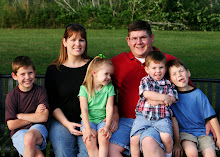
Our Flat Stanley Project
Each September, we begin a 9 month geography project using the book "Flat Stanley. In the book, Stanley is flattened by a bulletin board and has some crazy adventures, including being mailed to California to visit friends before being mailed back. After we finish the book, each child will design their own Flat Stanley. Once that is done, we will be ready to mail him somewhere for an adventure!
By September 15, I am asking that each child send me 2-3 index cards containing the addresses of friends or family (1 per card) from anywhere in the country or the WORLD! Last year, we had Stanleys that went as far as Australia, Germany, France, Canada, and Switzerland! The friends and family need to be families that will take "Stanley," who is no bigger than a piece of paper and can be folded) somewhere interesting and take a picture of Stanley on his 'vacation.' We will provide a self-addressed, stamped envelope for him to come home in. Host families can either email me about the adventures OR mail any letters, pictures, post cards, or brochures back with him. We will track where our Stanleys have been using a map outside our classroom door and will, hopefully, learn about new places in the process.
Please try to send these addresses by September 15, as the kids will be excited to get Stanley out on his first of many adventures for the year! Email me with any questions. If you would like to donate supplies, we are in need of both domestic and international stamps, and large envelopes (they should fit a piece of paper folded in half). Thanks so much for supporting this fun and educational project! I can't wait to see where Stanley gets to go this year!






 Lucky the Ladybug
Lucky the Ladybug




